Annapolis, MD Pollen and Allergy Report for Summer 2023
Pollen Allergy Trends in Annapolis, MD
When is pollen lowest in Annapolis, MD?

February
Lowest month total PPM
Avg. PPM
When is pollen highest in Annapolis, MD?

April
Highest month total PPM
Avg. PPM
How does pollen in Annapolis, MD compare to Maryland?
Annapolis has a lower average PPM than the state of Maryland.
Annapolis yearly avg PPM:
Maryland yearly avg PPM:
How does pollen in Annapolis, MD compare to the USA?
Annapolis has a higher average PPM than the USA.
Annapolis yearly avg PPM:
USA yearly avg PPM:
Is pollen worse this year in Annapolis, MD?
Spring 2023 was worse than spring 2022.
Spring 2023 PPM:
Spring 2022 PPM:
Average PPM in Annapolis, MD
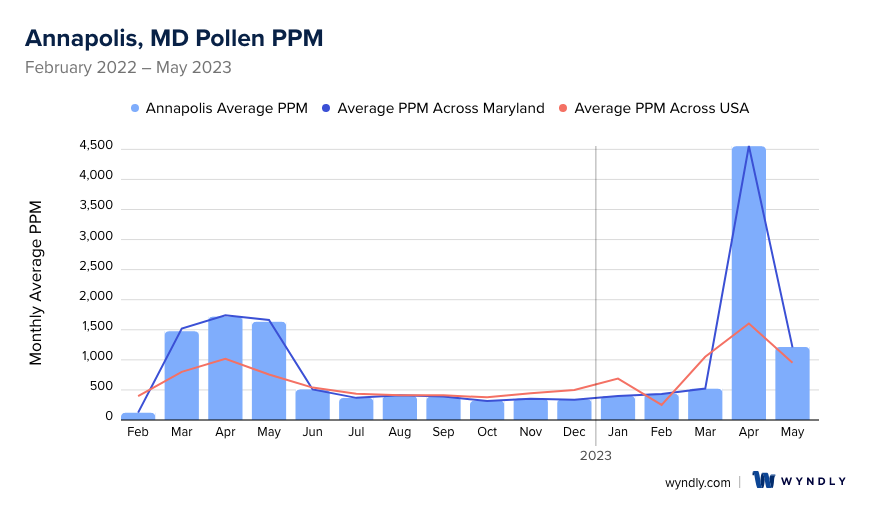

Annapolis, MD Pollen and Allergy Breakdown by Month
Grass
When is grass pollen highest in Annapolis, MD?
May has the highest grass pollen in Annapolis, MD with an average PPM of
When is grass pollen lowest in Annapolis, MD?
December has the lowest grass pollen in Annapolis, MD with an average PPM of
Tree
When is tree pollen highest in Annapolis, MD?
April has the highest tree pollen in Annapolis, MD with an average PPM of
When is tree pollen lowest in Annapolis, MD?
October has the lowest tree pollen in Annapolis, MD with an average PPM of
Weed
When is weed pollen highest in Annapolis, MD?
April has the highest weed pollen in Annapolis, MD with an average PPM of
When is weed pollen lowest in Annapolis, MD?
February has the lowest weed pollen in Annapolis, MD with an average PPM of
Annapolis, MD Pollen Monthly Breakdown by Pollen Type
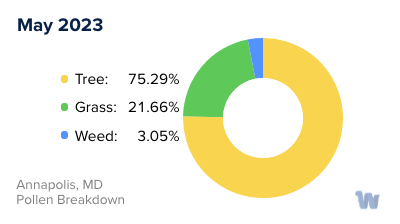
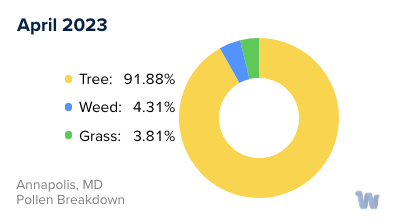
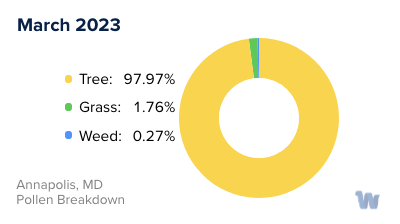
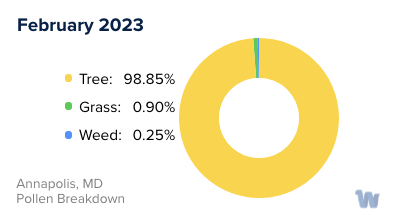
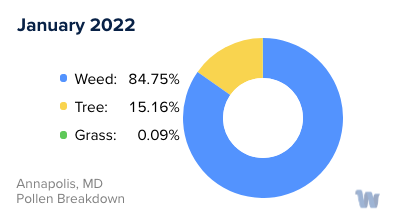
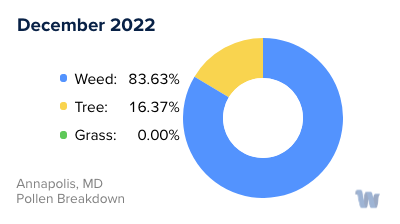
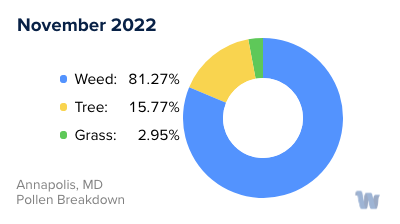
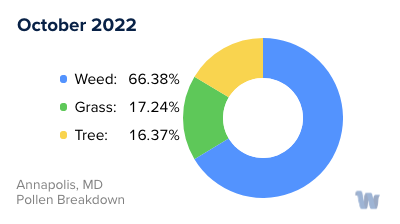
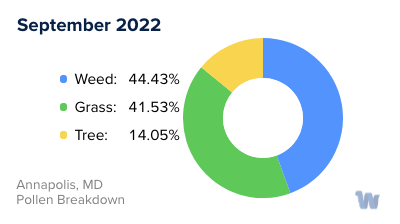
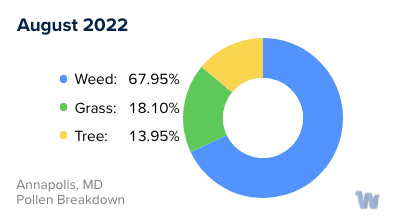
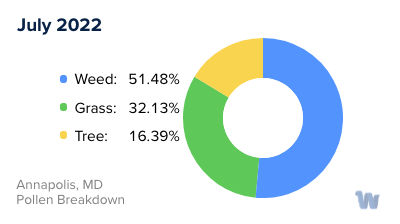
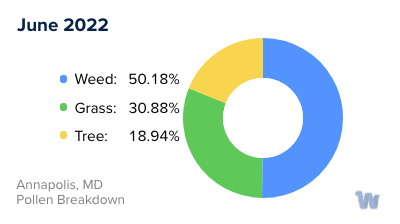
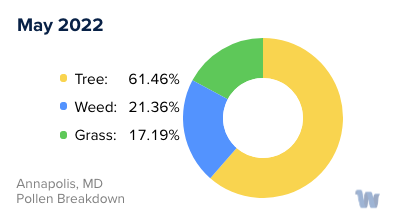
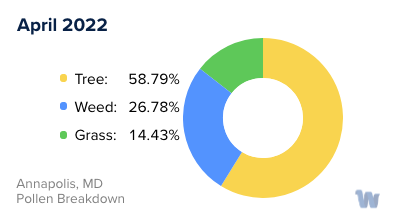
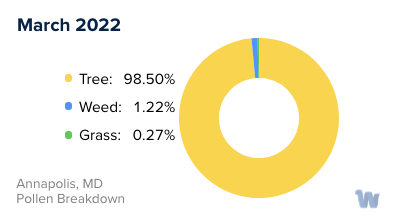
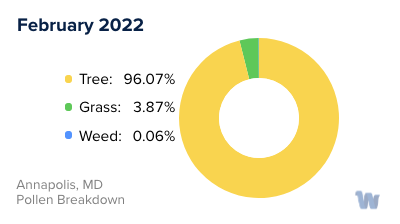
Pollen and Hay Fever in Annapolis, MD
Ah, Annapolis, Maryland, a picturesque city known for its captivating history, harbor charm, and unfortunately, for some, its pollen. If you find yourself sniffling or sneezing here, pollen allergies, or hay fever, might be to blame.
Pollen allergies in Maryland typically flare up in spring, summer, and fall, though the exact timing depends on what you're allergic to. In Maryland, grasses, trees, and weeds are the primary producers of pollen. Some of the most common allergens include Bermuda grass, Wormwood, Sagebrush, Orache, Amaranth, and several tree species such as Oak, Hickory, Ash, and Maple.
As spring breezes in, typically starting in late February or early March, tree pollen takes center stage. This period can be particularly challenging for those sensitive to Oak, Hickory, Ash, and Maple tree pollen. As the season evolves, grass pollen becomes the main culprit, peaking in the summer months. Bermuda grass and Amaranth are particularly potent producers of pollen during this time.
As summer wanes, weeds start to add their contribution, with the likes of Wormwood, Sagebrush, and Orache taking the lead. These allergens peak in late summer and persist until the end of the allergy season, usually around November's first frost.
If you're planning outdoor activities, it might be helpful to know that April, June, and September are typically the peak months for seasonal allergies. Pollen counts tend to be lower in the evenings during these months, offering some respite for those affected.
While the winter months provide a break from outdoor allergens, those sensitive to indoor allergens may still find challenges. Regardless of the season, Annapolis's vibrant plant life can trigger allergies in susceptible individuals, making year-round vigilance important.
Remember, knowledge is power. Understanding the types of pollen and the timing of their release can help those affected by pollen allergies navigate their way through Annapolis's seasons with greater comfort and confidence.


